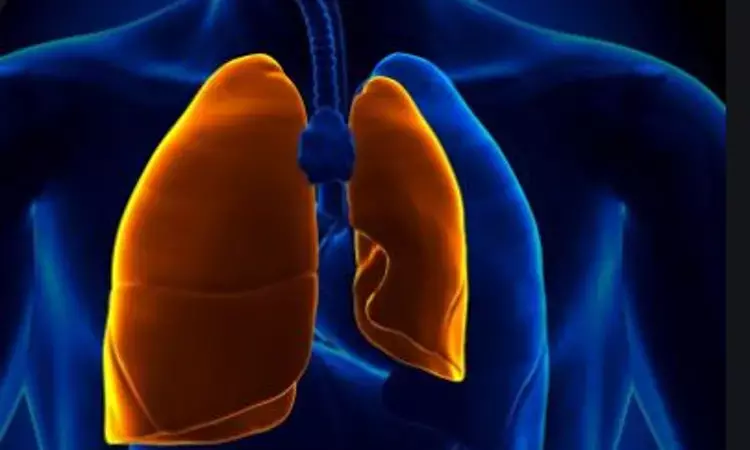- Home
- Medical news & Guidelines
- Anesthesiology
- Cardiology and CTVS
- Critical Care
- Dentistry
- Dermatology
- Diabetes and Endocrinology
- ENT
- Gastroenterology
- Medicine
- Nephrology
- Neurology
- Obstretics-Gynaecology
- Oncology
- Ophthalmology
- Orthopaedics
- Pediatrics-Neonatology
- Psychiatry
- Pulmonology
- Radiology
- Surgery
- Urology
- Laboratory Medicine
- Diet
- Nursing
- Paramedical
- Physiotherapy
- Health news
- Fact Check
- Bone Health Fact Check
- Brain Health Fact Check
- Cancer Related Fact Check
- Child Care Fact Check
- Dental and oral health fact check
- Diabetes and metabolic health fact check
- Diet and Nutrition Fact Check
- Eye and ENT Care Fact Check
- Fitness fact check
- Gut health fact check
- Heart health fact check
- Kidney health fact check
- Medical education fact check
- Men's health fact check
- Respiratory fact check
- Skin and hair care fact check
- Vaccine and Immunization fact check
- Women's health fact check
- AYUSH
- State News
- Andaman and Nicobar Islands
- Andhra Pradesh
- Arunachal Pradesh
- Assam
- Bihar
- Chandigarh
- Chattisgarh
- Dadra and Nagar Haveli
- Daman and Diu
- Delhi
- Goa
- Gujarat
- Haryana
- Himachal Pradesh
- Jammu & Kashmir
- Jharkhand
- Karnataka
- Kerala
- Ladakh
- Lakshadweep
- Madhya Pradesh
- Maharashtra
- Manipur
- Meghalaya
- Mizoram
- Nagaland
- Odisha
- Puducherry
- Punjab
- Rajasthan
- Sikkim
- Tamil Nadu
- Telangana
- Tripura
- Uttar Pradesh
- Uttrakhand
- West Bengal
- Medical Education
- Industry
Solitary pulmonary capillary hemangioma presents with ground glass opacity: case report

Solitary pulmonary capillary hemangioma (SPCH) is a rare benign lung tumor that clinically resembles early lung cancer and precancerous pulmonary lesions that present with similar imaging manifestations. Preoperative diagnosis remains a challenge because it is radiographically visualized as a ground-glass opacity (GGO), which is considered to indicate early lung cancer or a precancerous lesion. Definitive diagnosis as SPCH needs immunohistochemical staining.
Dr Komatsu T et al have reported a case of Solitary pulmonary capillary hemangioma that presented with ground glass opacity.They stated that ground-glass opacity lesions may represent an SPCH or AIS/early lung cancer but because the prognosis of each of these diseases is quite different, a pathological examination involving immunohistochemistry must be conducted to ensure the establishment of the correct diagnosis.
The case is published in the International Journal of Surgery Case Reports
The authors studied a 54-year-old Japanese man for the evaluation of a GGO, which was found incidentally within the right upper lung on computed tomography. The lesion was suspected to be a slow-growing early-stage non-small cell lung cancer. For diagnostic and therapeutic purposes, a segmentectomy (an anterior segment of the right upper lobe) was performed via video-assisted thoracoscopic surgery. Pathologic examination showed thickening of the alveolar septum caused by the proliferation of capillary vessels without cytological atypia. Immunohistochemistry revealed that this lesion was negative for thyroid transcription factor-1 and cytokeratin and positive for CD31 and CD34. The final diagnosis was SPCH.
A number of cases have been reported in the English literature however, it is still a rare benign lung tumor accounting for only 8.5% of all benign lung nodules. SPCH is difficult to diagnose because of a lack of typical symptoms. Radiographic findings often include pure or mixed GGOs, which may lead to suspicions of adenocarcinoma in situ (AIS), atypical adenomatous hyperplasia, and focal inflammation.
Although the diagnosis remains a big question, studies have been conducted by many giving the following results –
- Zhao et al. summarized 9 surgically resected cases of SPCH. In terms of radiographic appearance, the following findings were observed on chest CT: 3 cases, pure GGO; 3 cases, mixed GGO; 2 cases, a completely solid nodule; and 1 case, a cystic-solid appearance.
- According to the report by Sakaguchi et al.,18F-fluorodeoxyglucose positron emission tomography for SPCH showed no abnormal uptake in the lesion.
Based on the findings observed in the 54- year old man, the authors concluded that the frequency of the diagnosis of SPCH is likely to increase with the widespread use of CT for lung cancer screening. Preoperative differential diagnosis based on imaging findings is very difficult.
Therefore, GGO lesions may represent an SPCH or AIS/early lung cancer but its final diagnosis can be confirmed only after a proper pathological evaluation.
For the full article Click on the link: https://doi.org/10.1016/j.ijscr.2020.08.020
Dr. Nandita Mohan is a practicing pediatric dentist with more than 5 years of clinical work experience. Along with this, she is equally interested in keeping herself up to date about the latest developments in the field of medicine and dentistry which is the driving force for her to be in association with Medical Dialogues. She also has her name attached with many publications; both national and international. She has pursued her BDS from Rajiv Gandhi University of Health Sciences, Bangalore and later went to enter her dream specialty (MDS) in the Department of Pedodontics and Preventive Dentistry from Pt. B.D. Sharma University of Health Sciences. Through all the years of experience, her core interest in learning something new has never stopped. She can be contacted at editorial@medicaldialogues.in. Contact no. 011-43720751
Dr Kamal Kant Kohli-MBBS, DTCD- a chest specialist with more than 30 years of practice and a flair for writing clinical articles, Dr Kamal Kant Kohli joined Medical Dialogues as a Chief Editor of Medical News. Besides writing articles, as an editor, he proofreads and verifies all the medical content published on Medical Dialogues including those coming from journals, studies,medical conferences,guidelines etc. Email: drkohli@medicaldialogues.in. Contact no. 011-43720751


